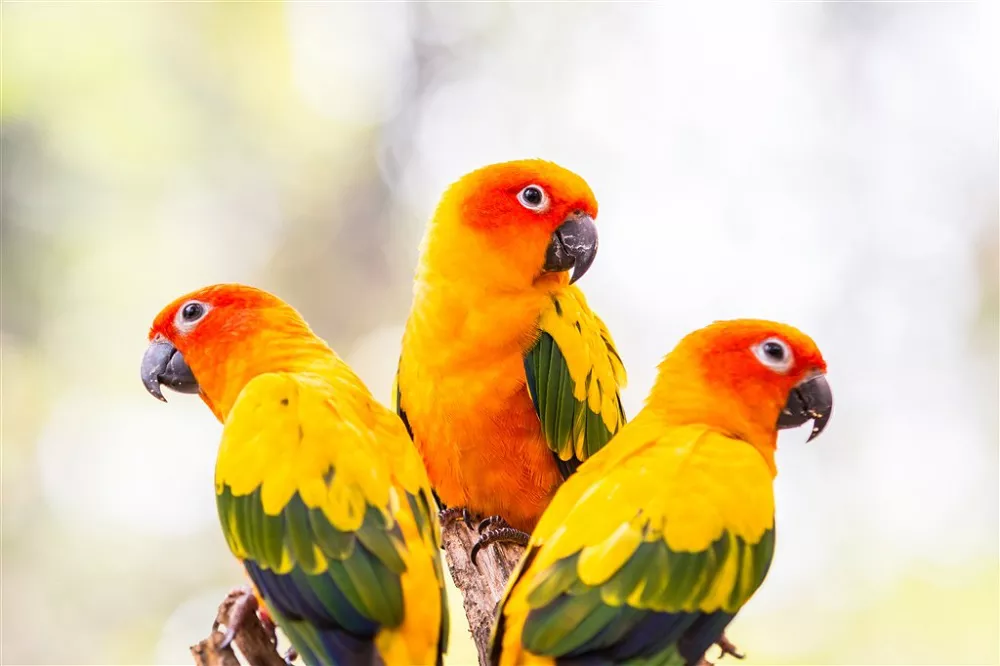The Sun conure (Aratinga solstitialis), also known in aviculture as the sun parakeet, is a medium-sized, vibrantly colored parrot native to northeastern South America.
What does a Sun conure look like
The Sun conure has a body length of 30 cm and a weight of 120-130 g. The body of this parrot is mostly golden yellow, with a little orange tinge on the top of the head, sides of the cheeks, lower abdomen and lower back; the main coverts on the inside of the tail are dark green with a little golden tinge; Flight feathers are dark green with blue tips; secondary flight feathers on the outside of the wings are golden yellow with some dark green feathers; eyes have white nubs around the eyes; beak is black and irises are dark brown . Juveniles are the same color as adults, but the head is golden yellow with many green feathers, and the wings are also mostly green.
Sun conure habitat
The Sun conure mainly inhabits arid, semi-deciduous broad-leaved forests and wooded savannas, and can rise to altitudes of 1200 meters above sea level. Inhabit the seasonally flooded Varzea forest around the Amazon River. In the wild, there are usually small groups of 4 to 12, and sometimes groups of about 30 live among fruit trees and bushes.
Sun conure living habit
The bright plumage of The Sun conure is not obvious when moving among dry bushes, but when flying or resting on a bare branch, its bright plumage is easy to detect. When flying, it will be accompanied by piercing chirping, which is very noisy and can be heard from a long distance, so it is easy to find their traces. It is quite quiet when foraging, and sometimes makes a hen-like clucking sound when eating.
What do Sun conures eat
The Sun conures mainly feed on seeds, berries, fruits (especially cactus fruits), flowers, and nuts.
Distribution area of Sun conure
Distributed in Brazil, Amazon Basin, Guyana, Suriname, French Guiana, and southeastern Venezuela.
Mode of reproduction
They are monogamous, and enter the breeding season in February every year, building a bird’s nest in the hollow of a palm tree. Each clutch lays about 3 to 5 eggs, the incubation period is about 23 days, and the female bird feeds for about a month. The chicks will remain in the nest for about 8 weeks. It reaches sexual maturity at about 2 years old and can live for 25 to 30 years.


 Facebook
Facebook  Instagram
Instagram  Youtube
Youtube 